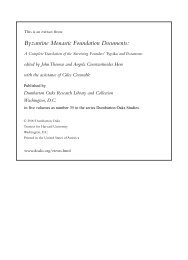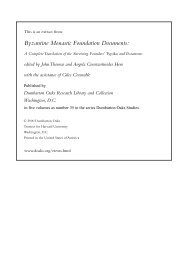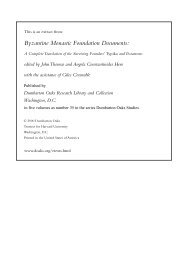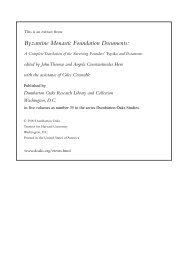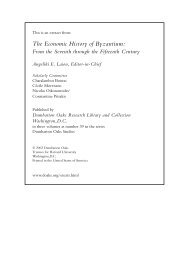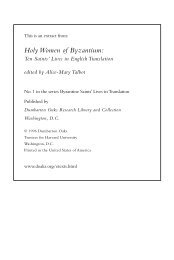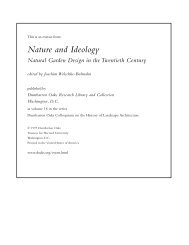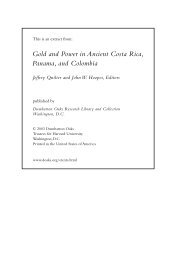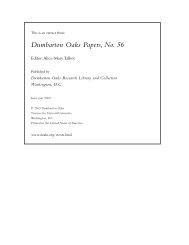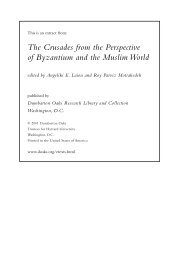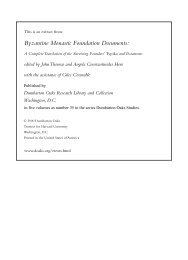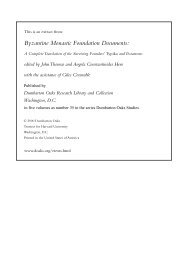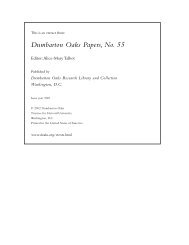The Zooarchaeological Record from Formative ... - Dumbarton Oaks
The Zooarchaeological Record from Formative ... - Dumbarton Oaks
The Zooarchaeological Record from Formative ... - Dumbarton Oaks
Create successful ePaper yourself
Turn your PDF publications into a flip-book with our unique Google optimized e-Paper software.
<strong>The</strong> <strong>Zooarchaeological</strong> <strong>Record</strong> <strong>from</strong> <strong>Formative</strong> Ecuador<br />
<strong>The</strong> <strong>Zooarchaeological</strong> <strong>Record</strong> <strong>from</strong> <strong>Formative</strong> Ecuador<br />
PETER W. STAHL<br />
BINGHAMTON UNIVERSITY<br />
<strong>The</strong> systematic recovery and analysis of animal remains <strong>from</strong><br />
archaeological sites in Ecuador is a recent development of the<br />
past few decades. Although we might cite Jacinto Jijón y Caamaño’s<br />
pioneering work at Quinche (1912) and Cerrito de Macají (1927) as early<br />
exceptions, the potential importance of zooarchaeological data was not actually<br />
realized until the late 1950s with the work of Meggers, Evans, and Estrada<br />
(1965) at the <strong>Formative</strong> site of Valdivia. Not only did they list the frequencies<br />
and proportions of identified taxa by excavation unit but they also integrated<br />
these data into their interpretation of the site’s early occupation. With the explosion<br />
of interest in <strong>Formative</strong> archaeology during the late 1960s and early<br />
1970s, the recovery, analysis, and interpretation of archaeofaunal specimens<br />
became somewhat standard, as zooarchaeological data assumed increasing importance<br />
for archaeological inference.<br />
Throughout the relatively brief history of <strong>Formative</strong> archaeology in Ecuador,<br />
archaeologists have used zooarchaeological data to support inferences about<br />
prehistoric subsistence and ecology. Like most forms of archaeological evidence,<br />
faunal remains were pliably manipulated to support different and often<br />
conflicting interpretations of regional prehistory. Inferential statements generally<br />
complied with the specific research biases and competing theoretical or<br />
methodological interests held by different archaeologists. Coastal sites with abundant<br />
marine and limited or no terrestrial fauna were regarded by some researchers<br />
as examples of a primary or exclusive marine subsistence orientation.<br />
<strong>The</strong>se sites stood in contrast to coastal middens with lower-than-expected<br />
amounts of marine and no recovered terrestrial resources, which were believed<br />
175




